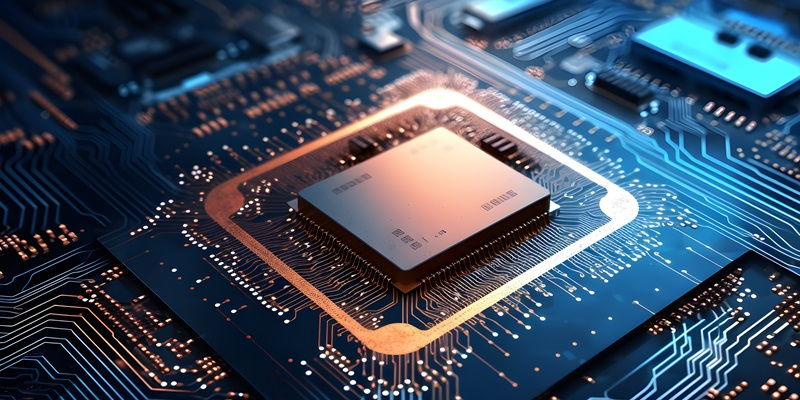The Intel Arrow Lake-S Desktop CPUs have been highly anticipated by tech enthusiasts and professionals alike. Promising significant upgrades in architecture, core configuration, graphics capabilities, and overall performance, these CPUs are set to take desktop computing to new heights. In this article, we delve deep into the details of these powerful processors, exploring their architecture, core configuration, graphics capabilities, performance improvements, enhanced cache capacity, platform and motherboards, memory support, additional SKUs, and PCIe Gen5 connectivity.
Architecture and Core Configuration
The Intel Arrow Lake-S Desktop CPUs will feature the Lion Cove P-Core and Skymont E-Core architecture. This innovative combination of cores sets the stage for exceptional performance. With up to 8 P-Cores and 16 E-Cores, these CPUs boast a total of 24 cores and 32 threads. Such a vast number of cores enables seamless multitasking and enhances the overall system speed.
When it comes to graphics capabilities, the Intel Arrow Lake-S CPUs will be equipped with the latest GT1 Xe-LPG iGPU. However, this iGPU will have a reduced number of Xe-cores compared to the ones found in the upcoming Meteor Lake CPUs. While not as powerful as its Meteor Lake counterpart, the GT1 Xe-LPG iGPU still delivers impressive graphics performance, making it suitable for casual gaming and multimedia tasks.
Performance Improvements
With the Intel Arrow Lake-S Desktop CPUs, users can expect a significant boost in performance. These processors offer a 5% increase in IPC (Instructions Per Cycle), translating to faster and more efficient computing. Furthermore, the CPUs deliver a remarkable 15% increase in multi-threaded performance, making them ideal for demanding tasks such as video editing, 3D rendering, and software development.
Enhanced Cache Capacity
To further enhance performance, Intel has increased the L2 cache capacity of the Arrow Lake-S CPUs. Compared to previous generations, these CPUs feature up to 50% larger L2 cache. This larger cache size improves data access and retrieval, resulting in improved overall system responsiveness and reduced latency.
Platform and Motherboards
Intel has developed the brand new LGA 1851 socketed motherboards specifically for the Arrow Lake-S Desktop CPUs. These motherboards utilize the 800-series PCH (Platform Controller Hub), offering advanced features and connectivity options. This new platform ensures seamless compatibility and scalability, accommodating the powerful capabilities of the Arrow Lake-S CPUs.
Memory Support
The top motherboards designed for the Alder Lake-S CPUs boast support for up to DDR5-6400 memory. This cutting-edge memory technology delivers impressive data transfer rates, allowing for faster application loading, smoother multitasking, and overall enhanced system performance. This upgrade in memory support ensures that users can fully leverage the capabilities of the Alder Lake-S CPUs.
In addition to the core configuration featuring 8 P-Cores and 16 E-Cores, Intel is also introducing two more SKUs with different core configurations. These alternative SKUs include a 6+8 configuration and a 6+16 configuration, offering users more flexibility in choosing a CPU that suits their specific needs and budget.
Native Memory Speeds
The new desktop platform supporting the Arrow Lake-S CPUs enables much higher memory speeds natively. With support for speeds of up to 6400 MT/s (Mega Transfers per second), users can experience unparalleled memory performance. This increased memory speed enhances both the overall system responsiveness and the ability to handle memory-intensive applications.
PCIe Gen5 Connectivity
The Arrow Lake-S Desktop CPUs offer native x16 PCIe Gen5 connectivity for dedicated graphics cards (dGPUs). This ensures optimal performance for graphics-intensive applications and gaming. Additionally, the CPUs provide x4 PCIe Gen5 lanes for M.2 devices, enabling high-speed data transfer and storage capabilities.
The Intel Arrow Lake-S Desktop CPUs are poised to revolutionize the desktop computing landscape. With their powerful architecture, impressive core configuration, enhanced graphics capabilities, significant performance improvements, larger cache capacity, advanced platform and motherboard options, support for high-speed memory, and PCIe Gen5 connectivity, these CPUs represent a significant leap in performance and efficiency. The Intel Arrow Lake-S CPUs are set to empower users with unparalleled computing power and enhance their productivity, creativity, and gaming experiences.

